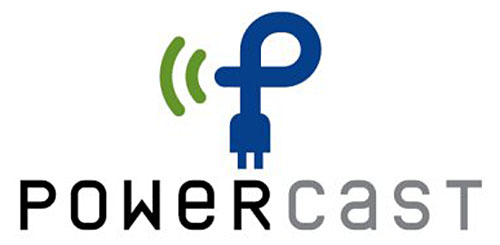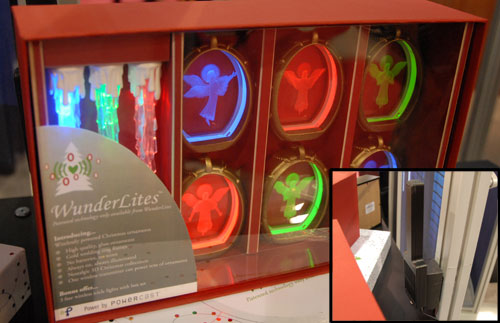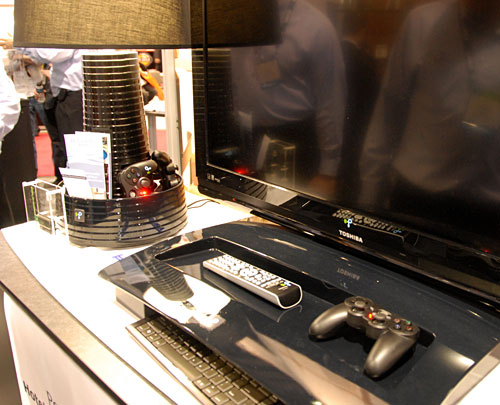
By Evan Ackerman
Last year at CES, PowerCast really seemed to be the future. True wireless power… No pads, no adapters, no contacts, nothing at all. Just power getting sent straight through the air. Wouldn’t that be great? Like many things we saw last year at CES, though, the ultimate potential of this technology has not yet been realized. Powecast is making progress, however, and they were able to demo a few conceptual products to us. I say “conceptual” since although these things are fully functional prototypes, Powercast isn’t going to produce them directly… Rather, they’re looking to license their technology to manufacturers.

These Christmas ornaments are being lit up by a power transmitter plugged into the wall behind them. They stay lit even if you move them a meter or two away from the transmitter. Wunderlights, as they’re called, may possibly be available for Christmas 2009 at $35ish per ornament, or somewhere around $250-$300 for the kit pictured above with a transmitter included.

The actual “cast” part of Powercast technology, the ranged wireless power, is (sadly) really only practical for ultra low power applications like LEDs and sensors and stuff. For higher power electronics, the receiver needs to be a lot closer to (generally, in contact with) the charging surface. Powercast has put together some concepts for how this might work in the home, including this TV stand and lamp that charge remotes and stuff. Powecast says that using their continuous charging technology, you’ll have to replace the remote itself before you’ll have to change the batteries.
If you absolutely can’t wait to play around with Powecast tech, the only thing they’re actually selling right now is a development kit which contains everything you’ll need to create a Powercast enabled prototype… It’s $2000.
[ PowerCast ]





This is a great representation of Powercast products and strategies. It is true that in the United States, any designer, developer, engineer can start working with RF wireless power using the Powercast Lifetime Power Evaluation and Developers Kit. It provides a means for self discovery and rapid prototyping.
This is a great representation of Powercast products and strategies. It is true that in the United States, any designer, developer, engineer can start working with RF wireless power using the Powercast Lifetime Power Evaluation and Developers Kit. It provides a means for self discovery and rapid prototyping.
im happy for that news , everybody gonna love it